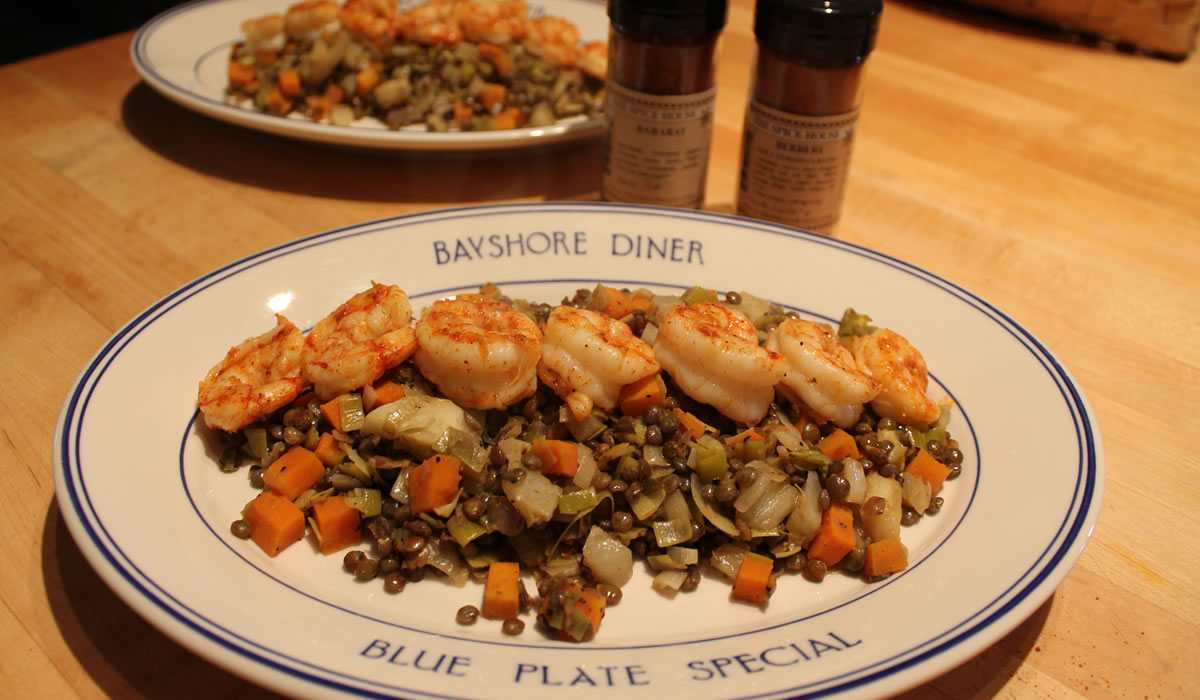Tonight we’re blending cultures from Ethiopia and the Persian Gulf using the spice blends Berbere and Baharat.
Berbere is a very familiar spice to me. I worked with several Ethiopians when I was on staff at UCSF and even had the pleasure of going to a fabulous Ethiopian wedding. One woman I worked with, Mewded, would make Berbere every few months and bring it to me in quart mason jars. I would go through it in no time. It was rich, spicy-hot, and utterly flavorful – I used it on everything.
From The Spice House website:
This aromatic and spicy berbere seasoning brings the exotic taste of Eritrea and Ethiopia to your kitchen. Crucial for the renowned wat stews from the headwaters of the Blue Nile, Berbere powder adds an alluring, complex flavor to meats, fish, poultry, and many vegetable dishes.
This Ethiopian berbere blend can be used as a dry rub or blended with oil or water to create a flavorful paste. It’s essential for traditional Ethiopian dishes, or tasty as a rub for grilled vegetables, fish,and poultry.
Hand mixed from: paprika, onion, fenugreek seed, fenugreek leaf, salt, chiles, shallots, garlic, cinnamon, pepper, ginger, cardamom, nutmeg, cumin, allspice, and cloves.
Baharat, on the other hand, is less familiar. The word baharat means spices in Arabic – and this is one flavorful spice blend. Baharat hails from the Persian Gulf and Middle East.
From The Spice House website:
Baharat means spices in Arabic, and this premium blend has a complex balance of spicy flavors. Savory and slightly sweet, with a lingering heat, Baharat spice is a unique all-purpose blend that recalls the wonderful flavors of Middle Eastern cuisine.
Cooks in the Persian Gulf area often turn to the Baharat blend to add spice and a little heat to ground meat dishes, vegetables, vegetable stuffing, couscous, and Tunisian egg tagines. The flavorful and subtly exotic taste of this Arabic spice mix are great for MedRim style cooking, and a simple way to spice up plain dishes like rice and meatballs.
This baharat spice is hand mixed from: Tellicherry black pepper, coriander, cumin, Ceylon select cloves, Saigon cinnamon, cardamom, Spanish paprika and Chinese Tien Tsin chile peppers.
Sound interesting?!? I will always maintain that the best way to know someone is to eat their native foods. Prejudice and closed mindedness melt away when one immersed in the foods of other people. Buy some different herbs and spices and start learning about the world!
Our fairly non-traditional but totally flavorful dinner, tonight, was lentils, fennel, carrots, and leeks with the baharat, and shrimp with the berbere.
I sauteed the leeks, fennel, and carrots until wilted and lightly browned, and then added a splash of white wine and a pinch of salt. I cooked the lentils separately, and when they were done, I added them to the vegetables with the Baharat.
I dusted the shrimp with the Berbere and placed it in a hot skillet, flipped them, and cooked the other side – total time about three minutes.
Lentils on the plate, shrimp on top.
That was it.
What made tonight’s dinner even better was the spices were part of an awesome going away/retirement gift from my friend, Jeff, at work. From specialty pizza flour to champagne, numerous spices, specialty rice, and grits, it’s the sort of multicultural gift that will keep me traveling around the world for a very long time!
Here’s to food and friendships!

